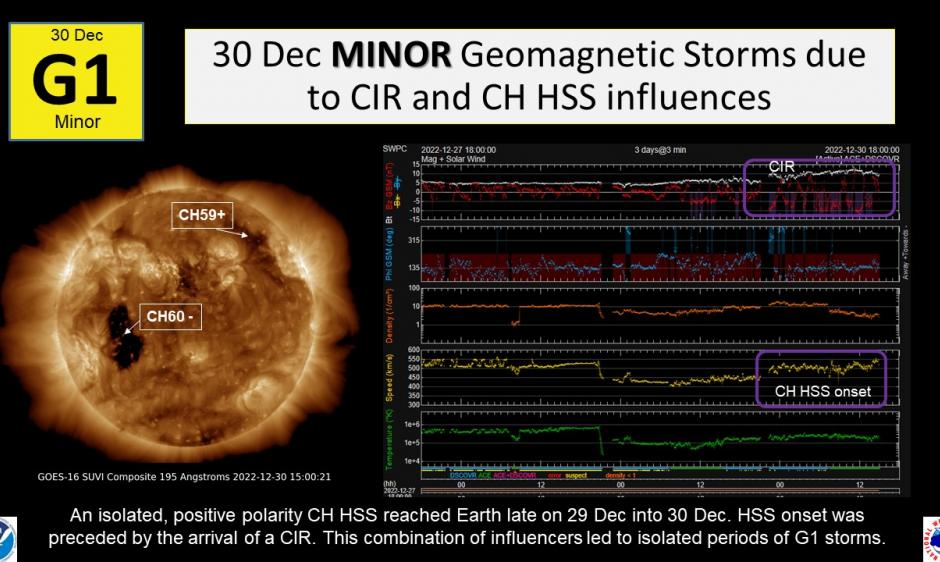
G1 (Minor) storm levels were reached late evening of 29 December ET (early 30 Dec UTC-day). The elevated geomagnetic responses were in reaction to a disturbed and enhanced solar wind field due to the influences of a co-rotating interaction region (CIR) ahead of an isolated, positive polarity coronal hole high speed stream (CH HSS) located in the solar northern hemisphere (CH59+). CIR arrival enhanced the interplanetary magnetic field (IMF) strength (Bt) to over 10 nT and prolonged periods of a southward directed component (Bz) also manifested. When the Bz component is directed southward, opposite that of Earth’s northward directed magnetic field, a better potential for enhanced geomagnetic response may be achieved. Following CIR arrival, CH HSS onset began with solar wind speed escalating to 500 km/s and even reaching near 550 km/s later. As the CIR passes and the IMF strength weakens, solar wind speeds are likely to remain elevated over the next two days, however, primarily geomagnetic field responses of unsettled to active levels are anticipated for 31 Dec – 1 Jan. Meanwhile, a more favorably located and trans-equatorial CH (CH60-) is anticipated to rotate into a geoeffective position later next week and SWPC forecasters continue to evaluate the potential for an NOAA Space Weather Scale levels. Continue to visit our webpage for the latest information and forecasts.